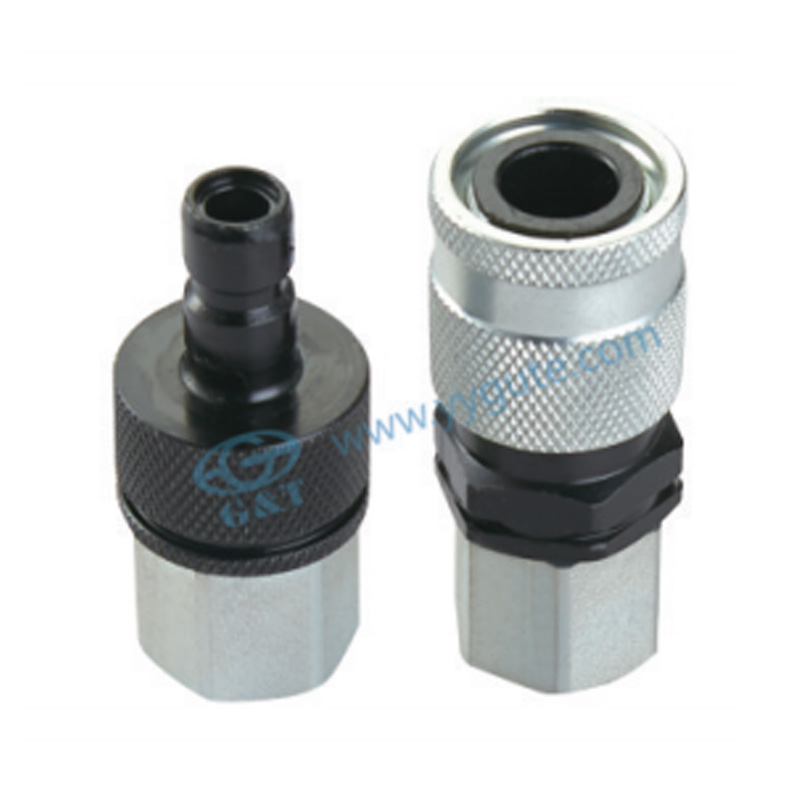How to solve common problems such as leaking or improper connection of hydraulic quick coupling?
Addressing common problems like leaking or improper connection of hydraulic quick couplings requires a systematic approach. Here's a step-by-step guide to solving these issues:
Inspect the Couplings: This initial step involves a comprehensive visual assessment of the hydraulic quick couplings. Inspect every aspect, from the external structure to internal components like seals and valves. Look for any visible signs of wear, corrosion, or damage, as even minor issues can lead to significant problems over time. Pay particular attention to the sealing surfaces and locking mechanisms, ensuring they are free from defects or deformation that could compromise their functionality.
Check for Proper Installation: Proper installation is crucial for the optimal performance and safety of hydraulic quick couplings. Review the manufacturer's installation guidelines meticulously, ensuring compliance with every detail. Check alignment, engagement depth, and locking mechanisms to guarantee they meet specifications. Any deviations from the recommended installation process could result in leaks, improper connections, or even equipment failure.
Inspect Seals and O-rings: The integrity of seals and O-rings is paramount for maintaining a leak-free hydraulic system. Conduct a thorough inspection of these components, checking for signs of wear, aging, or damage. Look for cracks, tears, or deformities that could compromise their ability to create a reliable seal. Even a small defect in a seal can lead to significant fluid loss or system malfunction, making regular inspection and replacement essential.
Clean the Couplings: Contaminants such as dirt, debris, or old hydraulic fluid can impair the performance of hydraulic quick couplings. Utilize appropriate cleaning methods, ensuring all mating surfaces are pristine before reassembly. Use solvent cleaners or compressed air to remove stubborn debris, paying attention to intricate areas where contaminants may accumulate. A thorough cleaning regimen ensures optimal sealing and prolongs the lifespan of hydraulic components.
Apply Lubrication: Lubrication is critical for ensuring smooth engagement and proper sealing of hydraulic quick couplings. Apply a compatible lubricant to all seals, O-rings, and mating surfaces, reducing friction and wear during connection and disconnection. Choose lubricants specifically formulated for hydraulic systems, as incompatible products can degrade seals and compromise performance. Proper lubrication also enhances the longevity of hydraulic components, reducing maintenance costs over time.
Check for Correct Sizing: Hydraulic quick couplings must be correctly sized to match the flow rate, pressure rating, and connection type of the hydraulic system. Refer to equipment specifications, compatibility charts, or consult with technical experts to confirm the appropriate size for your application. Mismatched couplings can lead to leaks, pressure drops, or even system damage, underscoring the importance of precise sizing and compatibility.
Inspect Connections: Thoroughly inspect the mating surfaces of both male and female hydraulic quick couplings for any irregularities or damage. Even minor imperfections can compromise the integrity of the connection, leading to leaks or improper engagement. Use magnification tools if necessary to identify small defects that may be invisible to the naked eye. Ensure that both mating surfaces are clean, smooth, and free from burrs or contaminants that could hinder proper sealing.
Tighten Connections: If the hydraulic quick couplings feature threaded connections, use calibrated torque wrenches to tighten the fittings to the manufacturer's recommended torque values. Over-tightening can cause deformation or damage to the couplings, while under-tightening may result in insufficient sealing or connection integrity. Follow the torque specifications precisely to achieve the optimal balance between secure attachment and component longevity.
GT-KJ open and close type hydraulic quick coupling













Contact Us